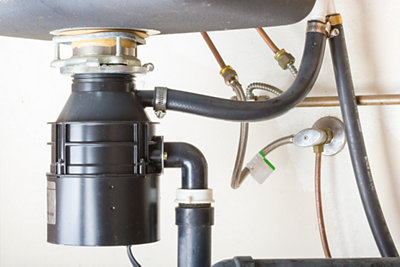From Grind to Shine: How to Fix Your Garbage Disposal
As the invention approaches one hundred years old, garbage disposals are a staple in American homes. They are very common, and most people expect one in a new home. So, what happens when the garbage disposal stops working, and when is it time to bring in a professional?
This article will help you understand the garbage disposal underneath your kitchen sink. It’ll help you troubleshoot the cause of your garbage disposal problem and what you should do about it. By the end, you will also learn about how to get the expert advice you need if you have any other questions!
Diagnosing the Disposal
The first thing you need to do is work out what occurred so that you can resolve it. There is no point worrying about repair bills yet, it might be something simple. Grab a set of overalls or clothes you do not mind getting messy, and jump in.
Strange Noises
If your disposal sounds like a member of a thrash metal band in the middle of their chorus, the chances are high that something is stuck in there. The first thing you need to do is turn the power off to your disposal, to eliminate the chance of an injury. Then grab yourself a flashlight and look for yourself.
Remember never to stick your hand down into the sink. We don't need to tell you why.
Can you see anything in the disposal when you shine your light down there? A loose utensil or a big chunk of hard bone might be all you need to remove. If you see something, get a long pair of tongs and start your game of Operation.
Once it is out, turn the disposal switch back on and run it to see what happens. It might not be the only item you find, after all.
Receiving the Silent Treatment
It could be that the sink is not making any noise at all. This might be an issue with the disposal, or it could be a tripped circuit breaker.
Go and look for your breaker box and see if it has tripped. If so, there might be a bigger issue at play. If you are confident that is not the case, go ahead and reset it. You can press this when you feel like it is the last piece of the puzzle.
If you have not checked the disposal, give it a thorough inspection. If something is stuck in there, the breaker might have tripped because the disposal's motor was acting up. Or, you could have a short circuit somewhere in the electronics.
If the system still does not make noise even after resetting the breaker, you might want to bring in an expert.
A Stubborn Disposal
If, after all the above, the system will still not start up, it might have turned itself off. In this case, locate the reset button for the disposal by searching for the red button on its underside. This is a safety feature much like your home's breaker, and if it has popped out, then it has triggered to stop the disposal running.
Turn off the power to the disposal, then press the reset button. If it does not remain pressed, there is a larger issue at play. This will also be the case if it flips again after only a few minutes and may demand a more thorough search for a problem.
All Hum and No Action
If you hear a humming sound, but the garbage disposal won't turn, this might also mean the engine cannot turn the unit. Two of the main reasons for this include an unseen blockage or the device not getting enough power.
Power at Your Disposal
Investigate the electrical panel the device connects to. Make sure the plug is snug in the outlet, and that the power cord is secure. Inspect all electrical parts you can see to ensure they are not damaged and there are no other visible problems.
You will also want to ensure the device receives the right amount of power. Check the expected power input in the device's manual, along with what your outlet provides. If it does not receive enough power, you may have to find a different one.
Spin Me Right Round
If the impeller blades cannot turn, it is not always something large like a utensil. You might need to shift them to dislodge small, hard objects.
Use a hex wrench (or "Allen wrench") to manually turn the blades. If you feel them scraping or getting stuck, you will know the problem is something they are getting stuck on. If you feel anything, try to run it after you spin them for a short time, as you may have freed them.
A Dreaded Leak
Water coming through the disposal can be both annoying to clean up as well as dangerous when it comes through electrical devices. These steps will help you prevent having to use the word "moist" more than you need to:
Turn Off the Source of the Leak
Make sure no water is going to the sink. If water is already in there, try to decant it into a different container, to prevent too much water from escaping through the leak.
When the device is dry and you can be assured of your safety, you can then try to fix the leak itself.
Search and Eliminate
While it's important to dry the device, you will need to push a little water through to find the source of the leak. Be careful as you do this and seek out any tiny cracks or insecure connections.
If you can tighten up any nuts or bolts, that might help stop the water flowing through. If not, and the device is still leaking, you might need to contact a professional or replace the garbage disposal. We know this might be a lot of effort, but it is better than creating a wet spot every time you use the sink, which could invite unwanted guests.
Clogs - Not Only for the Netherlands
Depending on what you put in the disposal, you might accidentally create disgusting balls of refuse. When this occurs, it can stop the impeller blades from moving further. The following tactics can help clear clogs, and prevent them from happening in the first place:
Hot and Cold Treatment
There are benefits to using both hot and cold water as you run your disposal. When you are running it most of the time, make sure to only pour cold water down it. This will solidify fats and grease, allowing the disposal to push them where they need to go.
Despite this, sometimes you might come across a grease or fat clog that grows too large, especially when it mixes with hair. If this is the case, try pouring some hot water down instead, mixed with soap. This can melt it down or break apart the fats, allowing the blades to move free again.
Other Uses for Coffee Grounds
If you are a big coffee user, be aware they can start to combine and might cause you to suffer from a blocked drainpipe. There are other uses for these you might want to investigate, such as in compost, or to scare away cockroaches and other pests.
The Worst Foods
Be careful with your food waste. Some types of organic refuse are worse than others and are more likely to create issues in your drain line. Some of the biggest dangers are fibrous vegetables, such as celery or even potato peels, as they can "catch" larger items and string them together.
Using Needle-Nose Pliers
If you do find a clog, you will need to break it up. Use some needle-nose pliers and reach into the sink drain, making sure not to put your fingers in with them. This can grab most clogs and pull them out or at least dislodge them.
Get Help Fixing Your Garbage Disposal
Learning how to fix the garbage disposal can make a real difference in home maintenance. Still, you might not feel confident doing it yourself, or you might still find all the troubleshooting advice above didn‘t fix the issue. If this is the case it might be time for a new garbage disposal. Like other home appliances, they don‘t last forever.
Enter Parker & Sons. We bring a wealth of experience, a knack for problem-solving, and a commitment to customer satisfaction that's simply unmatched. Don‘t sweat the small stuff when Parker & Sons has got you covered
Not only do we have experience in garbage disposal units, but we can help with nearly all your home improvement needs. Our specialists are ready to help you, so get in touch today for repair or installation!
Related Reading
Subscribe to our e-Newsletter
Stay up-to-date on current news, promotions, and industry tips.

